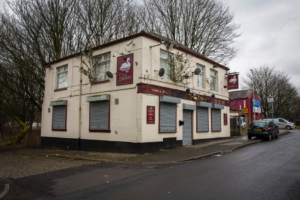Where’s the community in community wealth building?
Towards the end of 2019 Local Trust organised a tour of places in England to explore how local communities are taking on and applying ideas of community wealth building. In this blog one of the participants, Frances Jones, Associate Director at the Centre for Local Economic Strategies (CLES), reflects on the places they visited and the people they met.
In the UK we’re seeing a huge growth in take up of community wealth building ideas and growing interest in how it differs from bottom-up community economic development. For us at CLES, community wealth building is a practical strategy for tackling our failing economic model.
Over the last thirty years we’ve seen a disconnect emerge between economic growth and the prosperity of most people. This dichotomy can be explained in part by the way many local economies function: large proportions of the wealth that flows into places through private and public investment flows out again as payments for shareholders, while wages for local people stagnate and working conditions worsen. This extraction of wealth drives disinvestment in local economies resulting in poverty and inequality.
Community wealth building is a set of tools to reorganise local economies so that wealth is not extracted, but retained and recirculated locally, benefiting local people and communities. This requires the agency of both citizens and large local institutions (often referred to as anchor institutions). The opportunity to explore how community organisations are initiating this type of approach in their neighbourhoods is exactly the sort of thing that excites me.
We saw a huge amount during the week. One of the things that really struck me was how the great things people are doing on the ground serves to highlight the gaps in economic policy and infrastructure. In Dover we saw the amazing Co-Innovation space where the Big Local Partnership is incubating 44 small local businesses. It’s just brilliant, a low risk, supportive way for people to test out their business ideas before having to make the leap onto the high street. But they’re doing it using charitable funding, in a building the Council have enabled them to use for a peppercorn rent while it awaits redevelopment. So, while its working brilliantly, it is fragile. At the same time there are significant sums of national and local funding for business support but these are directed at businesses who generate maximum contributions to GDP rather than these locally generative types of businesses.
It was clear that in their work the people we met are creating change in their communities but the headwinds they face are strong – in both policy and financial terms. I was really struck by the work in Chapeltown in Leeds to develop inclusive community-led housing. It has taken decade of work to get that scheme off the ground, yet in some parts of the world that model of co–operatively owned housing is the norm.
These examples foreshadow a very different type of economy, but for me the risk is that, unless they marry the energy and the rootedness of locally led, people-powered activity with the weight of the local and national state, they will remain isolated, one off examples. In practical terms, this means a wider community wealth building approach, advanced at a national, regional and local level which seeks to change the wider economic system.
To find out more about the role that community wealth building can play at a localised level, read the full report by CLES.


